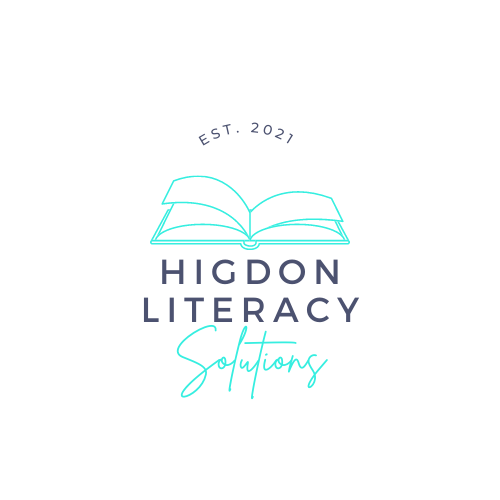The Importance of Thematic Reading and Activities in November and December
As the year winds down, November and December bring a festive energy that many educators and parents use to their advantage. Integrating seasonal themes into reading and activities during this time can add excitement and depth to learning, fostering engagement and reinforcing key skills in a fun, memorable way. For students at Higdon Learning Solutions and in classical or humanities-based programs, thematic reading and activities offer an ideal opportunity to connect with tradition, deepen comprehension, and build lifelong literacy and critical thinking skills.
1. Boosts Engagement Through Relevance
Students naturally become excited about the changing seasons and upcoming holidays. November and December’s themes—such as thankfulness, family, winter, and celebrations around the world—bring subjects that feel relevant to their lives and experiences. When students connect emotionally or culturally with what they're reading, their engagement soars.
For example, reading a story about Thanksgiving allows students to connect their own family traditions to the narrative. Likewise, exploring different cultural celebrations around the world encourages curiosity and empathy, helping children see the diversity and similarities in various winter celebrations. This approach also encourages them to value family and community and to reflect on the significance of gratitude and giving.
2. Creates a Strong Context for Learning New Skills
Thematic units provide a meaningful context for developing literacy skills, especially for young learners who thrive with hands-on, experiential learning. By anchoring new vocabulary, comprehension strategies, and inferencing skills within a thematic framework, students often grasp these concepts more quickly and with more lasting impact.
Consider a thematic unit around winter. Teachers can introduce new vocabulary words like “hibernate,” “migration,” or “evergreen” through texts about animals in winter or winter weather. This not only improves vocabulary retention but also reinforces science concepts in an engaging, age-appropriate way.
Additionally, stories about winter holidays offer a wealth of opportunities to discuss story elements like character, setting, and plot. Many holiday tales are packed with vivid descriptions and emotional journeys that make discussions around literary elements more tangible.
3. Builds Literacy Connections Across Disciplines
For students in classical and humanities-based education, thematic units can integrate history, science, geography, and art alongside reading, giving students a holistic, interdisciplinary learning experience. For example, a Thanksgiving unit might incorporate Native American history, early settler challenges, and discussions about gratitude. Similarly, December’s themes can encompass studies on winter science (like why snow forms) or geography (learning about climates around the world).
By connecting reading with other subjects, students gain a deeper understanding of how literature relates to their world. This approach enhances comprehension as students practice analyzing texts, making predictions, and drawing connections across various topics, strengthening both literacy and critical thinking skills.
4. Encourages Creativity and Self-Expression
Thematic reading can be a launchpad for creative activities that allow students to express themselves and practice new skills. Art projects, journaling, storytelling, and other creative exercises can be tied to reading themes to build a richer, more meaningful experience. After reading a story about winter, for instance, students can write their own short narratives about what winter means to them or create winter-themed art that reflects emotions or scenes from the text.
When students have the chance to bring stories to life through activities, they develop a sense of ownership over their learning. These projects allow for differentiation, too; students with diverse learning needs or abilities can participate in ways that work for them, whether through writing, art, or oral storytelling. The process reinforces comprehension while building confidence.
5. Builds a Foundation of Cultural Literacy
For students in classical and humanities-based programs, November and December offer a unique opportunity to explore themes of tradition, family, and cultural heritage. The stories, myths, and traditions associated with this time of year provide a chance to explore different cultures’ ways of celebrating, giving thanks, and reflecting on the past year. By reading stories from around the world, students build a foundation of cultural literacy that fosters respect and understanding, skills crucial in today’s diverse world.
Stories like “The Nutcracker” or “A Christmas Carol” expose children to classic literature, while tales of Diwali, Hanukkah, and Kwanzaa introduce them to global perspectives. This exposure deepens their understanding of cultural narratives, helping them relate literature to the broader themes of humanity and identity.
Tips for Implementing Thematic Reading at Home or in Class
Choose a Variety of Texts: Integrate fiction, non-fiction, poetry, and folk tales around your theme. For November and December, this could include everything from Thanksgiving stories and winter folktales to informational texts on animal hibernation.
Incorporate Hands-On Activities: Pair books with art, science experiments, or cooking projects related to the theme. For instance, after reading about winter animals, students might create bird feeders to hang outdoors.
Explore Diverse Perspectives: Seek out stories from various cultures to broaden students’ perspectives and enhance cultural literacy.
Set Up a Seasonal Reading Corner: Decorate a reading area with theme-related visuals, cozy winter props, or cultural decorations. This helps create a focused, immersive environment.
Encourage Reflection: Have students keep a journal or reflection log to document thoughts and responses to the books they read. This encourages metacognition and allows them to connect personal experiences to the themes they explore.
Conclusion
As the year’s final months bring joy, gratitude, and reflection, thematic reading and activities offer a unique, impactful way to deepen learning. For students at Higdon Learning Solutions, these practices not only enhance literacy but also create rich, interdisciplinary connections, foster cultural literacy, and make learning memorable. By using thematic approaches, we can capture students’ imaginations, enhance their understanding of the world, and lay a foundation of skills they’ll carry with them for life.


